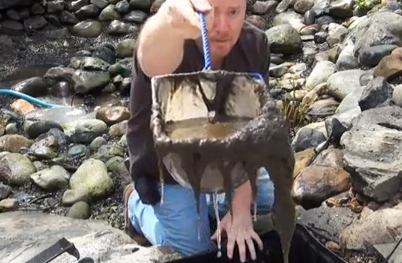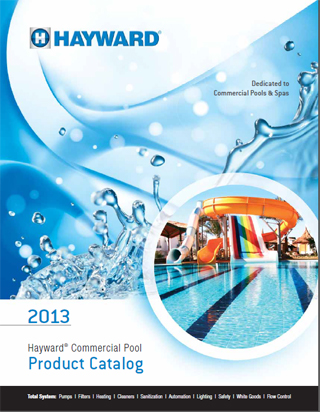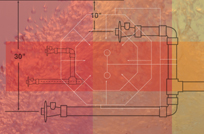pumps
Aquascape (St. Charles, IL) has published its 2013 product catalog – the first that combines…
Pond ownership comes with a range of responsibilities, not the least of which has to do with making certain everything is ship-shape at some point before the weather gets very warm in the spring. That’s particularly true if the pond carries a good population of
Hayward Commercial Pool (Elizabeth, NJ) has released the 2013 edition of its commercial products…
One of the longest-standing knocks against the pool and spa industry is that too many designers and builders rely too heavily on convention and seem disinclined to pursue new paths and ideas no matter how compelling they might be. Of course there are exceptions, but there’s a lot of truth to that statement when it comes to the technology chosen, for example, to drive circulation systems and chemically treat or light the water: All too often, pool and spa professionals tend to keep on specifying and installing equipment they’ve used for years – even if it’s outmoded or is no longer the best available approach – because they feel comfortable with it and
For many people, the devastating wildfires that swept through southern California in October 2007 are just another memory, washed away by the tides of current events. But for those who lost their homes in places like Malibu, Lake Arrowhead and Rancho Bernardo and elsewhere, those horrifying blazes will be part of their daily lives for months and years to come as they struggle to
Designing watershapes of any sort is becoming more and more challenging every day. Where not all that long ago consumers were happy if a pool or spa or fountain or pond simply looked good and operated reliably, there's a new generation of consumers who are much more interested in how these vessels are built and, more specifically, in knowing about how energy efficient they are. This trend is being driven on the one hand by the inevitability of rising utility rates and on the other by legislation such as California's Appliance Efficiency Code (Title 20) - a rule that's attracting the attention of code writers across the country because of the overwhelming importance these days of reducing energy consumption. With that backdrop, this article takes a look at a watershape's main energy consumer and the most basic of all its
When it comes to the myriad specialties of the world of watershaping, it's tough to think of any as broad as the one occupied by floating fountains: It's a category of systems that encompass flotation, illumination, spray systems, submersible pumps, connecting devices and land-based controls. On the one hand are the huge systems installed near the shores of lakes and rivers. These fountains can be monumental in size and visually dramatic - the sorts of popular landmarks that become tourist attractions and, often, community icons. On the other, there are the countless smaller floating fountains and aerators located in golf-course ponds and water hazards, in municipal-park and stormwater ponds, on private estates and institutional campuses and in the bays of larger bodies of water, either as single features or as groups. For 45 years now, our firm has been fortunate enough to have designed (and at times installed) floating fountain systems across this full spectrum, from the large and spectacular to the small and surprisingly subtle. Some have been purely decorative, while others have been totally
When it comes to the myriad specialties of the world of watershaping, it's tough to think of any as broad as the one occupied by floating fountains: It's a category of systems that encompass flotation, illumination, spray systems, submersible pumps, connecting devices and land-based controls. On the one hand are the huge systems installed near the shores of lakes and rivers. These fountains can be monumental in size and visually dramatic - the sorts of popular landmarks that become tourist attractions and, often, community icons. On the other, there are the countless smaller floating fountains and aerators located in golf-course ponds and water hazards, in municipal-park and stormwater ponds, on private estates and institutional campuses and in the bays of larger bodies of water, either as single features or as groups. For 45 years now, our firm has been fortunate enough to have designed (and at times installed) floating fountain systems across this full spectrum, from the large and spectacular to the small and surprisingly subtle. Some have been purely decorative, while others have been totally
Of all the concepts of hydraulic-system design, there are few that have more importance than the correlation between water flow (that is, capacity expressed as gallons per minute) and line velocity (the speed at which the water travels). As water travels through a pipe, its increase in speed (that is, its line velocity) results in an increase in resistance (expressed as feet of head) and in a reduction of end pressure, which is measured in pounds per square inch (psi). In other words, an increase in friction losses and a drop in pressure is the result of increased water velocity at a given flow. If that makes sense to you without further explanation, then you know much of what you need to know when it comes to selecting pipes and fittings and setting up a watershape's plumbing system. If it doesn't, this article will cover the basics - from selecting pipes and sizing lines to





















